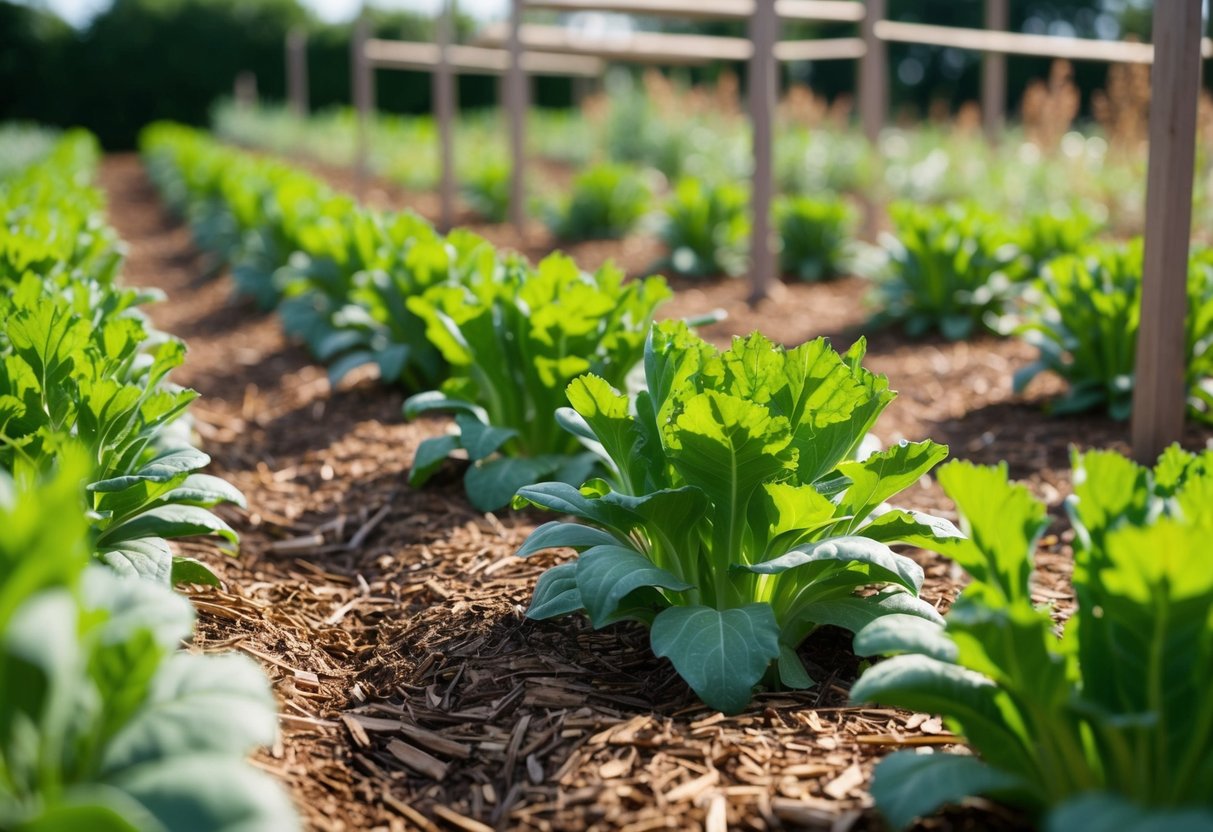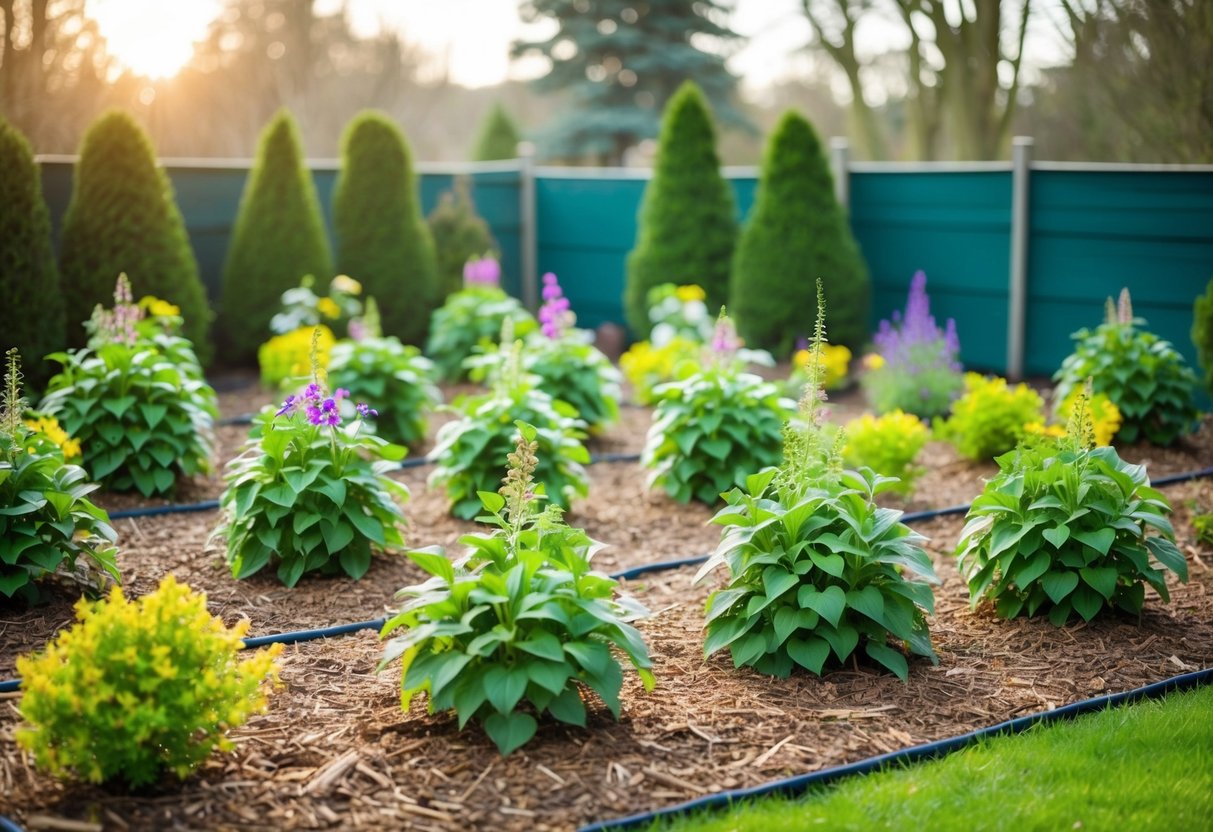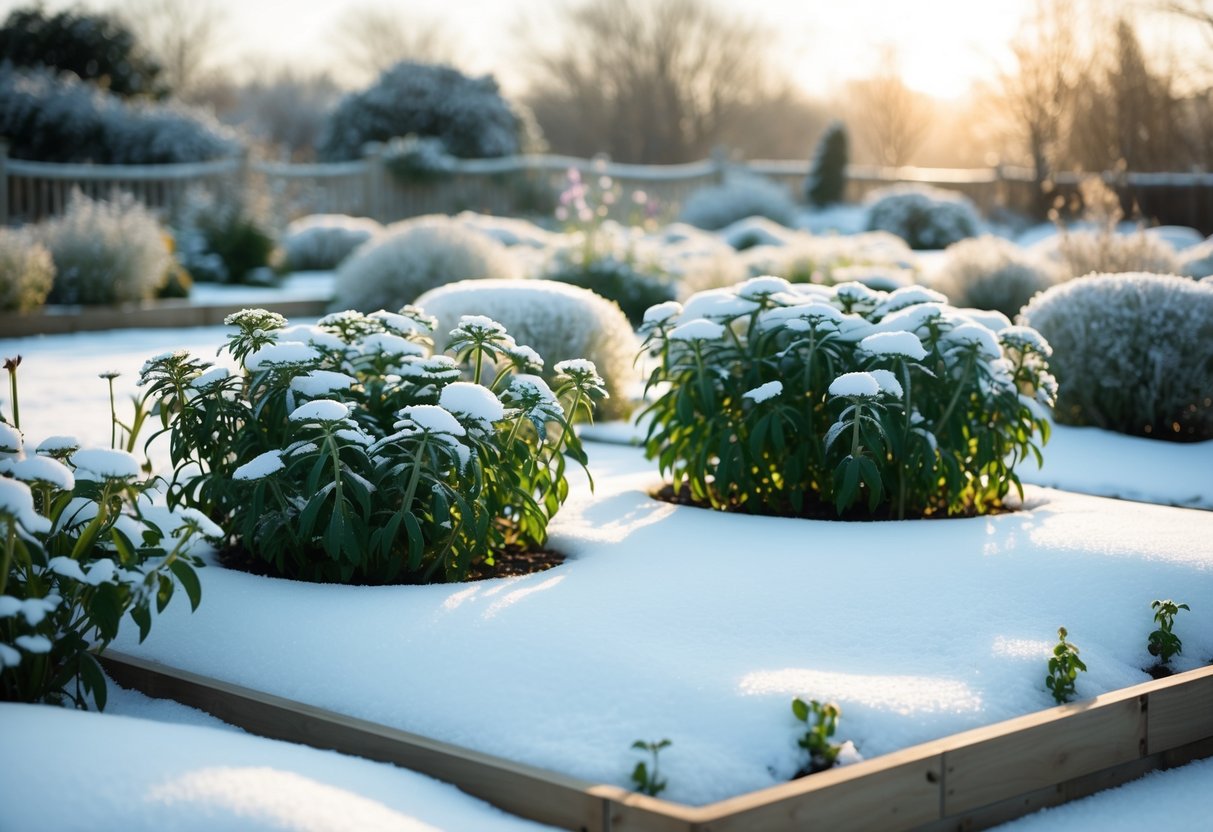How Do You Overwinter Hardy Annuals? Tips for a Healthy Spring
Thinking about overwintering your hardy annuals? It’s a smart move if you’re hoping for a vibrant garden come spring. To overwinter hardy annuals, you need to provide protection from harsh winter conditions while maintaining their exposure to natural elements.
This involves choosing the right location, using covers, and understanding the needs of each plant type.

You can start by planting your hardy annuals in well-drained soil where they can receive enough sunlight. Using mulch will help protect the roots from freezing temperatures. Some gardeners also like to employ techniques like winter sowing, where seeds are started in containers like milk jugs, allowing them to naturally experience winter’s freeze-thaw cycles, which is beneficial for many hardy plants.
Remember, each plant type might have specific needs, so keep an eye out for their particular requirements. Check out 5 Cool Flowers or explore Easy-to-Grow Hardy Annuals for more tailored advice. With a bit of care and attention, your hardy annuals can thrive through winter, making your garden flourish beautifully in the warmer months.
Understanding Hardy Annuals
Hardy annuals are unique plants that can thrive in cooler temperatures. Unlike true annuals, which complete their life cycle in one growing season, hardy annuals are especially tough and can survive colder climates. They offer a beautiful array of blooms, bringing color to your garden even before winter ends.
These plants, often called cool flowers, include varieties like snapdragons, pansies, and Rudbeckia. Being able to endure cold nights, they can be sown in late summer or early fall. This allows them to establish roots before the winter chill.
Winter is not just a dormant period for hardy annuals. While other plants rest, these delightful blooms take advantage of this time to strengthen themselves. By the time spring starts, they are ready to burst into life more robustly than before.
What makes them different from true annuals? True annuals don’t survive past one season. Hardy annuals, though, can sometimes live even through winter, depending on the severity of the weather.
To make the most of the growing season, plant hardy annuals to ensure your garden stays vibrant and colorful. For more guidelines on specific plants, consider checking out helpful resources like Lisa Ziegler’s guide on hardy annuals. With a bit of planning, you can enjoy their blooms for much longer than you’d expect.
Preparing for Overwintering

Overwintering hardy annuals requires choosing the right plants and knowing when to plant them. It’s all about timing and selecting varieties that can handle cold conditions.
Selecting the Right Varieties
When overwintering, start by selecting hardy annuals suited to your plant hardiness zone. Check which plants can withstand your local winter temperatures. Some common choices include snapdragons and larkspur, known for their ability to survive cold weather.
You should also think about their hardiness and frost resistance. Look for varieties labeled as “hardy annuals” or “cool-season annuals.” This means they can thrive in cooler fall weather or early spring without needing much protection.
Timing and Fall Planting
Timing is crucial when planting in the fall to prepare for overwintering. Aim to plant hardy annuals at least six weeks before the first expected frost. This gives them enough time to establish roots. Plant them in locations with good drainage to prevent waterlogging during the winter.
Use the last frost date as a guide but adjust based on your specific zone. If you live in a milder climate, you might delay planting until temperatures cool down. In colder zones, you might plant earlier to ensure they can withstand frost. Knowing your zone will help you determine the best timeline.
For regions with harsh winters, consider using mulch as extra protection. You can also plant tender perennials that may need added care to survive extreme cold. Remember, loose soil and good cover can help them thrive until spring returns.
Protective Measures and Microclimates

When you’re overwintering hardy annuals, using protective strategies can make all the difference. Mulch, cold frames, and greenhouses all play a role in shielding your plants from harsh conditions like frost and chilling winds.
Using Mulch and Coverings
Applying mulch is a simple way to insulate your garden. Start by spreading a 2-3 inch layer of organic matter like straw or bark chips over the soil. This helps maintain moisture and keeps temperatures stable.
For added protection, consider using floating row covers. These lightweight fabrics offer an extra layer against frost without smothering the plants. Covering plants at night and removing covers during the day can prevent overheating.
Creating Cold Frames
A cold frame acts like a mini-greenhouse. They’re typically made of a transparent cover and wooden frame. Place it over your plants to retain warmth from the sun during daylight hours.
For the best results, position cold frames facing south. In extremely cold weather, you might want to use an additional layer of insulating material inside the cold frame for extra warmth. This method allows you to start early planting in spring.
Leveraging Greenhouses
Greenhouses offer the most robust protection during cold months. They provide a controlled environment to mimic favorable growing conditions.
Ensure that your greenhouse has proper ventilation and insulation to manage temperature and humidity. You can also use thermal mass objects like water barrels to capture heat during the day and release it at night. Positioning your greenhouse away from direct winter winds can further help reduce heat loss.
Care During Overwintering

When overwintering hardy annuals, you need to pay attention to watering, ensuring proper light levels, and protecting them from pests and diseases. These factors help your plants remain healthy until the next growing season.
Watering and Soil Moisture
Keep the soil lightly moist to support your plants without causing waterlogged conditions. Use your finger to check soil moisture at about two inches deep. When it feels dry, it’s time to water.
Avoid letting the soil dry out completely as it can stress the plants. Over-watering can lead to root rot, so it’s essential to find the right balance. A good practice is to water deeply but infrequently, allowing the excess to drain away.
Consider using a moisture meter for more accurate readings. Regular watering ensures your plants have enough hydration to survive the winter months.
Managing Light and Temperature
Ensure your plants get enough light, especially during short winter days. If natural light is limited, use artificial lighting such as fluorescent or LED grow lights to supplement. Position these lights about 6-12 inches above the plants for the best results.
Keep the temperature stable, ideally between 50-60°F. Drastic changes can stress the plants. If possible, maintain a slightly cooler temperature during nighttime. Too much warmth may cause them to grow when they should be dormant.
Monitor the light levels and adjust as needed. This balance of light and temperature helps your plants stay healthy until outdoor conditions improve.
Preventing Pests and Diseases
Check your plants frequently for signs of pests such as aphids and spider mites. Use a gentle stream of water to wash them off or apply insecticidal soap if necessary.
Fungal diseases can also be a problem. Ensure good air circulation by not overcrowding plants. Trim any dead or damaged leaves to reduce disease risk.
To stop pests from spreading, isolate any affected plants. Regular inspection helps catch problems early, so your overwintering annuals stay in good shape for the spring.
Special Considerations for Specific Plants

Each type of plant may have unique needs during overwintering. By addressing those needs, you can help ensure their survival and promote healthy growth in spring. Here’s a closer look at how different plants should be managed during colder months.
Overwintering Tender Annuals Like Geraniums and Coleus
To care for tender annuals like geraniums and coleus during winter, you should move them indoors before the first frost. Geraniums thrive in a cool, dry environment. Store them in containers with drainage, and water sparingly to prevent root rot.
Coleus prefers a warmer spot with bright light. You should keep the soil moist, not soggy. Pinch back the growth to maintain a bushy form.
For both, keep an eye out for pests. Checking leaves regularly helps catch any unwanted bugs early. This will prepare your plants to flourish again when the warm weather returns.
Taking Cuttings from Impatiens and Begonias
Impatiens and begonias can be propagated easily through cuttings, ensuring fresh, healthy plants for the next growing season. To start, select healthy stems that are free from any disease.
Cut below a node, and remove the lower leaves. Dip the cut end in rooting hormone for best results. Then, place the cutting in a small pot with moist potting mix.
Cover it with a plastic bag to retain humidity but keep it out of direct sunlight. Check regularly for new growth, which indicates successful rooting. This method will give you strong new plants come spring.
Storing Tubers of Dahlias and Bulbs
For dahlias, after the first frost, dig up the tubers carefully. Cut back the stems to about six inches, and let them dry for a few days. Store them in a cool, dry place layered in peat moss or vermiculite.
Bulbs, too, require proper storage. Remove any excess soil and dead foliage. Keep them in a dark area with moderate humidity to prevent drying out.
Labeling each tuber and bulb helps with planting next season. By taking these steps, you’ll protect them through the winter and thrive again in the warm months.
Transitioning to Spring

As you get closer to spring, it’s time to help your overwintered hardy annuals adjust to the new season. Focus on gradually reacclimatizing them to outdoor conditions and preparing for the exciting time of spring planting and fertilizing.
Reacclimatizing Outdoor Conditions
When the weather starts to warm up, you need to gradually harden off your plants. This means you should slowly get them used to being outside again.
Start by placing your container plants outside for a few hours each day. Increase this time gradually over a couple of weeks.
This will prevent shock and encourage growth. Ensure they aren’t exposed to direct sunlight initially, as it can be too intense. Protect them from strong winds during this period.
Monitor the nightly temperatures closely. If it gets too cold, bring your plants back inside to avoid frost damage. This gradual acclimatization process can help them flourish when permanently moved back outdoors.
Spring Planting and Fertilizing
Once your plants are reacclimatized to being outdoors, it’s time for spring planting. Choose a sunny spot in your garden with well-draining soil.
Prepare the soil by loosening it and mixing in compost or organic matter to improve its fertility.
For existing garden plants, add a layer of mulch to retain moisture and control weeds. A balanced fertilizer is essential for your plants’ development.
Use a slow-release option to provide nutrients gradually. Follow the instructions on the packaging for best results.
Water your plants regularly, making sure not to overwater. Pay attention to the specific needs of each type of flower.
By setting the right conditions, your hardy annuals will thrive and bring vibrant color to your garden.







